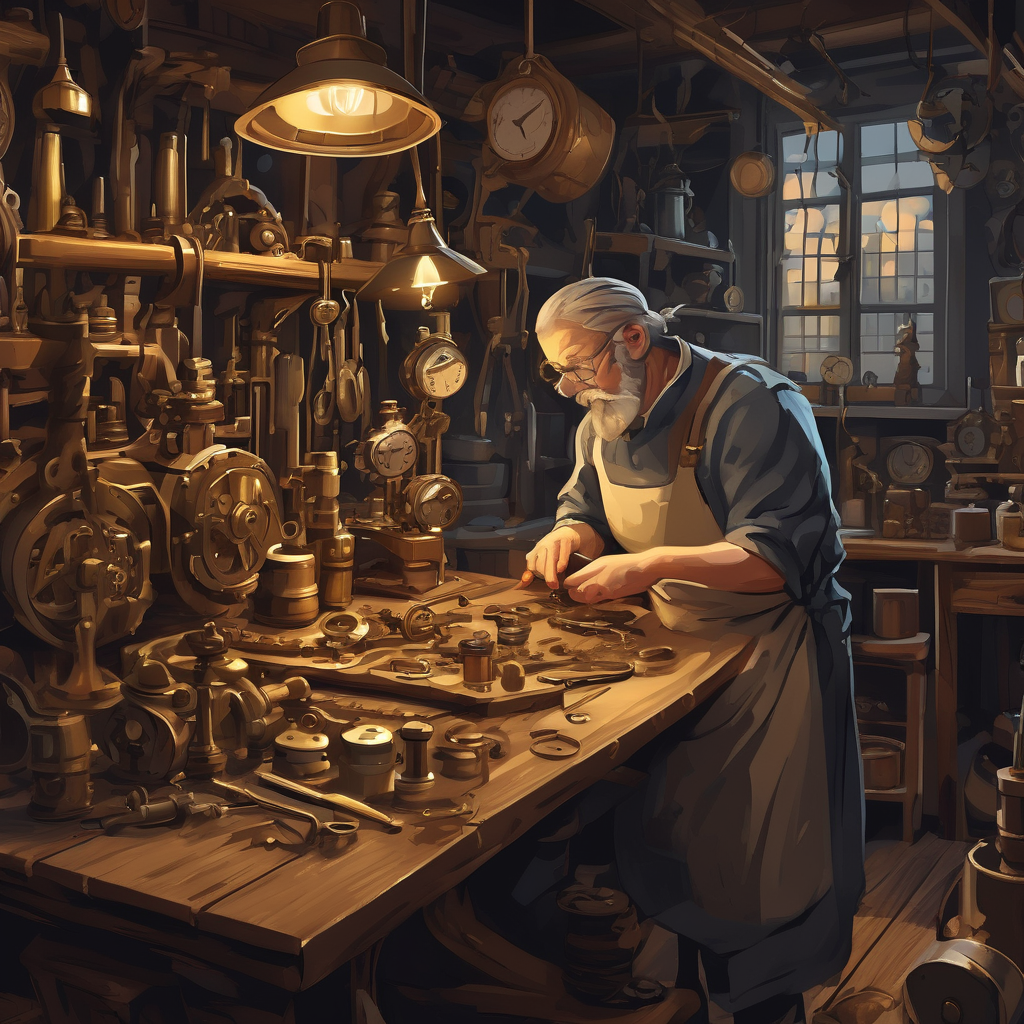The notifications wouldn’t stop pinging. Elara switched her phone to silent and returned to the delicate gears spread across her workbench, each one smaller than a fingernail. Outside, Dresden’s cobblestones gleamed with rain that had been falling since the market crash three days ago.
“Another blockchain startup gone under,” her assistant Marcus said, scrolling through his tablet. “They’re calling it the crypto winter of 2024.”
“Let them freeze,” Elara muttered, adjusting her magnifying lens. “Real value doesn’t evaporate overnight.”
Her father’s workshop hadn’t changed in thirty years—the same oak benches, the same brass tools, the same smell of machine oil and patience. While half of Dresden chased NFTs and neural networks, she remained here, fixing timepieces that had outlasted empires.
The door chimed. A woman entered, expensive coat dripping, clutching a wooden box.
“I need this repaired,” she said, revealing an astronomical clock from 1823. “It was my grandmother’s. She survived the bombing here in ’45. The clock stopped working yesterday when the AI servers crashed.”
Elara frowned. “This clock has no electronic components.”
“I know. But it stopped at exactly 3:47—the moment my trading algorithm failed. Everything connected to it just… stopped. Even things that shouldn’t be connected.”
Marcus looked up from his tablet. “That’s impossible. Unless—”
“Unless someone’s been experimenting with quantum entanglement and temporal mechanics,” Elara finished, recognizing the telltale marks on the clock’s base. “Someone’s been trying to predict market movements by syncing atomic clocks with historical pieces.”
The woman paled. “My son. He said he could make the old clocks ‘smart.’ Said he could feel the market’s rhythm through them.”
Elara carefully opened the clock’s back panel. Inside, barely visible, was a mesh of fiber optic threads woven between the original gears—a parasitic network feeding off the clock’s mechanical precision.
“Your son created a temporal arbitrage system,” Elara said. “He linked modern markets to these old mechanisms, thinking their stability would anchor his predictions. But when the servers crashed, the feedback loop reversed.”
“Can you fix it?”
Elara picked up her father’s smallest screwdriver. “I can remove what doesn’t belong. But some connections, once made, leave marks. Your clock will run again, but it will always be three seconds behind—the exact processing delay of your son’s algorithm.”
As she worked, she thought about all the young entrepreneurs trying to disrupt time itself, never understanding that the old clockmakers already knew: time disrupts you. Outside, the rain stopped, and somewhere in Dresden, a thousand other clocks continued their patient counting, indifferent to the rise and fall of digital fortunes.
The woman left with her grandmother’s clock, ticking steadily if imperfectly. Marcus returned to his tablet, reading about recovery strategies and market resilience.
Elara picked up the next broken timepiece, a simple pocket watch from 1889. No fiber optics, no quantum entanglement, just a broken mainspring and a desire to mark the hours honestly.
She smiled and began to work.

Leave a Reply